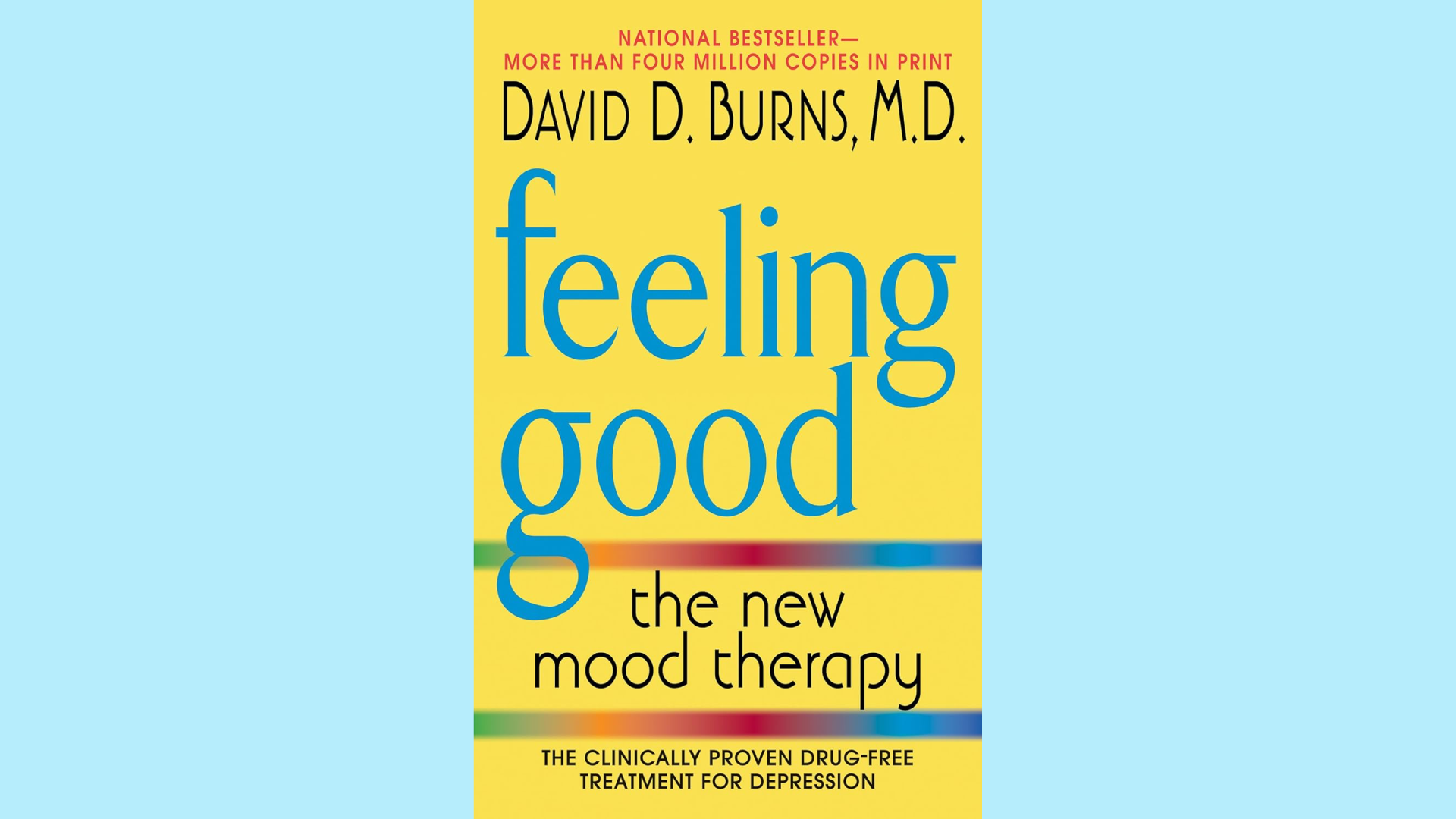Summary: Feeling Good by David Burns

Entrepreneurs are no strangers to the pressures of building and sustaining a business. The journey can often feel like a roller coaster of highs and lows, with stress and anxiety as constant companions. However, a powerful tool can help you navigate these challenges more effectively: Cognitive Behavioral Therapy (CBT).
Designed initially for managing depression and anxiety, the principles outlined in David D. Burns' seminal book, "Feeling Good: The New Mood Therapy," can be transformative for entrepreneurs looking to enhance resilience and maintain mental clarity. Let’s explore how you can apply CBT techniques to thrive not only in your business but in your personal life as well.
Recognizing and Rewiring Automatic Thoughts
Every entrepreneur experiences rapid-fire thoughts that automatically occur in response to daily events. These automatic thoughts can be skewed by cognitive distortions, leading to unnecessary stress and decision fatigue. Recognizing these patterns is the first critical step. For instance, if you think, “This pitch will flop,” you’re likely facing a cognitive distortion.
"Automatic thoughts, the ones that come spontaneously and throw you into emotional turmoil, need to be identified and tamed to alleviate emotional suffering." David D. Burns.
Combatting Cognitive Distortions
Cognitive distortions are exaggerated and irrational thoughts that can distort reality, often leading to negative emotions. Here are a few common ones that you might recognize:
- All-or-nothing thinking: You see things in absolute terms. If a product launch isn’t a runaway success, you view it as a failure.
- Overgeneralization: You view a single adverse event as a never-ending pattern of defeat. One failed deal means all subsequent deals are doomed.
- Mental Filtering: You focus solely on the negatives. Despite receiving nine positive comments about your service, one negative feedback has ruined your day.
- Jumping to Conclusions: This includes mind-reading (assuming you know what others are thinking) and fortune-telling (predicting things will turn out badly).
"Distorted thinking can cloud our perceptions and lead us down a path of irrational fears and misconceptions." David D. Burns.
Creating Rational Responses
Once you’ve identified these distortions, challenge them. Analyze the evidence for and against your thoughts. Is there evidence that your product launch will fail, or are you assuming the worst? Replace the negative thought with a more realistic one: “Not all launches are perfect, but I can handle the challenges.”
Activating Positive Behaviors
Behavioral activation is crucial in CBT. It pushes you to choose actions that align with your values and goals rather than succumbing to negative feelings. For entrepreneurs, this could mean deliberately networking even when you feel it won’t pay off or systematically delegating tasks to prevent burnout. Positive behaviors reinforce the connection between your actions and a positive mood.
"Action is a powerful antidote to depression. It is a remedy that can often surpass medication and alleviate the feeling of despair." David D. Burns.
Keeping a Thought Diary
A practical tool for applying CBT is maintaining a daily thought record. This diary helps you monitor your thoughts and the situations in which they arise. Over time, patterns emerge. Perhaps your stress peaks during financial reviews, or your energy dips after specific meetings. With this knowledge, you can prepare strategies to manage these stressors more effectively.
"The very act of writing down your thoughts can have a profound impact on your mental health. It is a therapeutic tool that can bring clarity and insight." David D. Burns.
Testing Your Beliefs
Entrepreneurs can benefit from setting up experiments to test the validity of their fears. If you’re hesitant to turn down requests, fearing it might lead to lost opportunities, experiment by saying no to non-essential requests and observing the outcomes. Often, the results are less catastrophic than feared, and you gain more control.
"Testing your beliefs through real-world experiments can fundamentally shift your thinking and improve your mental well-being." David D. Burns.
By incorporating these CBT techniques into your entrepreneurial strategy, you mitigate the emotional ups and downs of running a business and empower yourself to lead with confidence and resilience. As David D. Burns emphasizes in "Feeling Good: The New Mood Therapy," understanding and applying the principles of cognitive behavioral therapy can profoundly enhance your ability to manage stress and maintain a positive, productive mindset.

About David D. Burns
Dr. David D. Burns is a prominent psychiatrist and Adjunct Clinical Professor Emeritus at the Stanford University School of Medicine. He is widely recognized for pioneering work in developing and popularizing Cognitive Behavioral Therapy (CBT) and has authored several influential books on the subject. Born in 1942, Dr. Burns completed his medical degree at the Harvard Medical School, followed by his residency at the University of Pennsylvania School of Medicine.
His bestselling book, "Feeling Good: The New Mood Therapy," has sold millions of copies worldwide and is credited with bringing the principles of CBT to a vast audience without the need for formal therapy. This book has been used widely in clinical settings and has been influential in changing the lives of countless individuals suffering from mood disorders.
Dr. Burns' work emphasizes practical techniques for changing negative thoughts and behaviors, focusing on self-help approaches that empower individuals to apply these techniques independently. His contributions to mental health have garnered numerous awards and widespread recognition, making him one of the leading figures in the field of psychotherapy. His ongoing work focuses on therapeutic innovations and training professionals in effective, evidence-based treatment methods.
7 Practical Ways to Cultivate Mindfulness Today
Introduction:
In our fast-paced world, it’s easy to get caught up in the hustle and bustle of daily life, often leaving us feeling stressed, anxious, or disconnected. Cultivating mindfulness offers a powerful antidote to these challenges, helping us to tune into the present moment and find peace amid the chaos. Drawing inspiration from the timeless wisdom of “Feeling Good” by David Burns, here are seven practical ways to cultivate mindfulness today.
1. Mindful Breathing Exercise:
Begin by finding a comfortable seated position and gently closing your eyes. Bring your awareness to your breath, noticing the sensations as you inhale and exhale. If your mind wanders, gently guide your focus back to your breath without judgment. Spend a few minutes in this practice to center yourself and quiet the mind.
2. Thought Monitoring:
Throughout the day, observe your thoughts without trying to change them. Notice any negative or distorted thinking patterns, such as all-or-nothing thinking or catastrophizing. Knowing these thought patterns is the first step towards challenging and reframing them.
3. Practice Gratitude:
Set aside time each day to reflect on three things you’re grateful for. These could be small pleasures, moments of kindness from others, or aspects of your life that you often take for granted. Cultivating Gratitude can shift your focus from negativity and foster a greater sense of contentment.
4. Engage in a Pleasant Activity:
Make a conscious effort to schedule time for activities that bring you joy and fulfillment. Whether reading a book, walking in nature, or spending quality time with loved ones, fully immerse yourself in the experience and savor the present moment.
5. Mindful Eating:
Next time you have a meal or snack, practice mindful eating. Take your time to savor each bite, paying attention to the food's flavors, textures, and sensations. Tune into your body’s hunger and fullness cues, eating slowly and with intention.
6. Body Scan Meditation:
Find a quiet space where you can lie down comfortably. Close your eyes and bring awareness to your body, starting from the top of your head and slowly scanning down to your toes. Notice any tension or discomfort, and breathe deeply into those areas to release any tension.
7. Grounding Exercise:
When you’re feeling overwhelmed or anxious, use a grounding exercise to return to the present moment. Engage your senses by noticing five things you can see, four things you can touch, three things you can hear, two things you can smell, and one thing you can taste.
Conclusion: cultivate greater mindfulness
Incorporating these simple practices into your daily routine can help you cultivate greater mindfulness and presence. Remember that mindfulness is a skill that develops with practice, so be patient and compassionate with yourself as you explore these techniques. You can find greater peace, clarity, and joy in each moment by nurturing mindfulness.
